Best of Things, Clothing, Mountain-Bikes -
The 11 Best Mountain Bike Helmets in 2020
Helmets are perhaps the most important piece of equipment to have during mountain biking.
The important question is, which one is the best mountain bike helmet in the market today?
You’d want something which offers great value, comfort, and more importantly, top-quality safety features while not breaking the bank at the same time.
A good helmet will have these characteristics :
- Fit is comfortable and the helmet sits snug on your skull.
- Breathability. Large ventilation holes to provide maximum airflow to cool you down.
- Safety features such as MIPS and SPIN provide additional protection when you crash at an awkward angle.
- Safety certifications such as CPSC, CE, or AU/NZ give a piece of mind that the helmet has been thoroughly tested to industry stndards.
I’ll be discussing these in detail below and also share with you some of the popular mountain bike helmets today.
A Quick Glance : Our Favorite Helmets for Mountain Bikers
On This Page
MTB Helmets Buying Guide
If you are unsure how to choose the right mountain bike helmet, this section will address those questions you might have.
Let’s take a deeper look at the things to consider when buying a mountain bike helmet.
1. Types of Mountain Bike Helmets
Similar to the different types of mountain biking, the needs for each type of riding differs slightly.
Trail
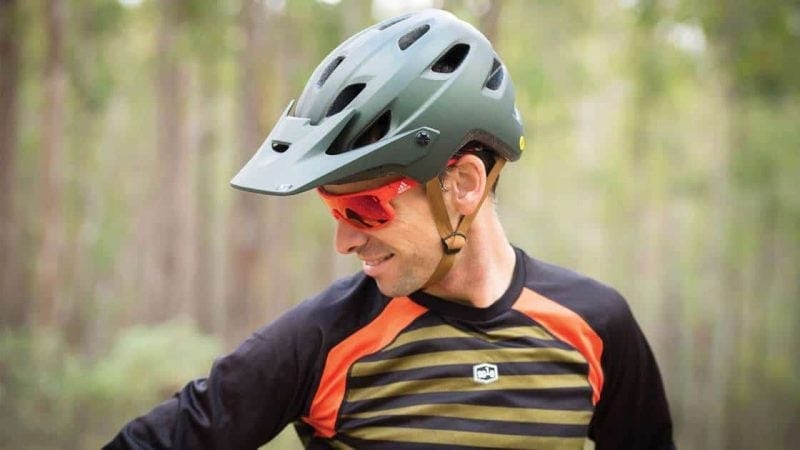
Trail riding is the simplest style of mountain biking, so the requirements for helmets are a bit easier. Riding on pre-marked trails may be the entry-level of mountain biking, but that doesn’t mean it isn’t an all-time favorite for veterans and newbies alike.
The best helmets for trail riding will be light, breezy, and comfortable half-shells like the Giro Fixture MIPS, which is a great compromise between protection and price, or the POC Octal X which is one of the lightest around.
Cross-country (XC)
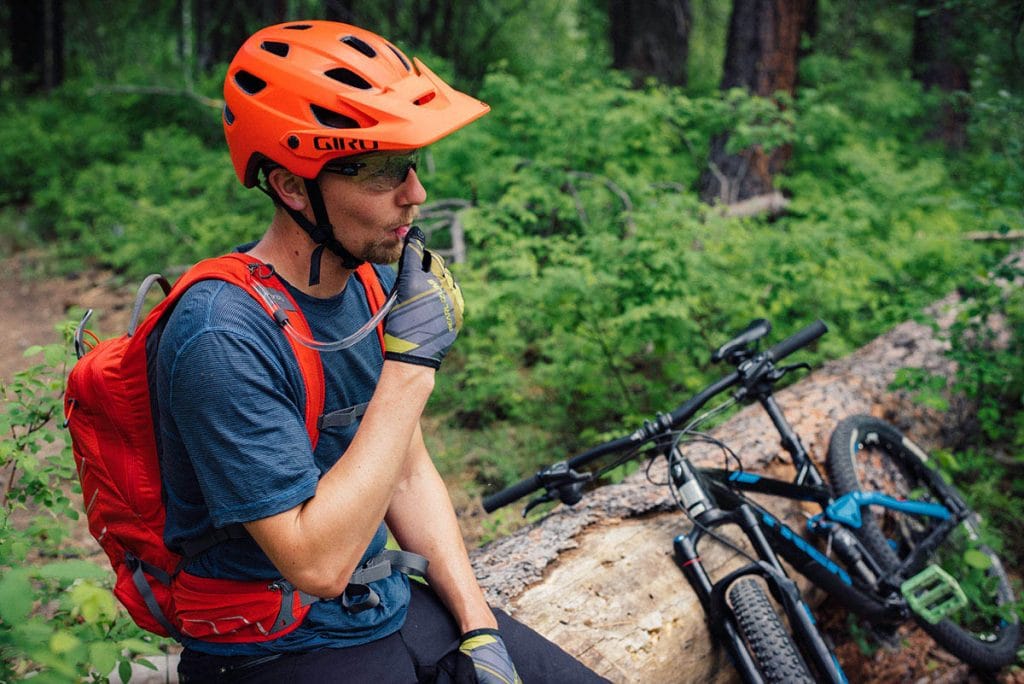
Cross-country riding is for those with a little more energy and a little less patience for trails, riding in loops or fixed routes over various terrain types.
With XC, you’re in for a few surprises, so you’ll want a sturdy helmet, incorporates resilient safety features and provides excellent visibility for quick reaction. Hence, a half-shell like the Oakley DRT5 or the Smith Optics Forefront 2 is a great choice.
Downhill/Enduro
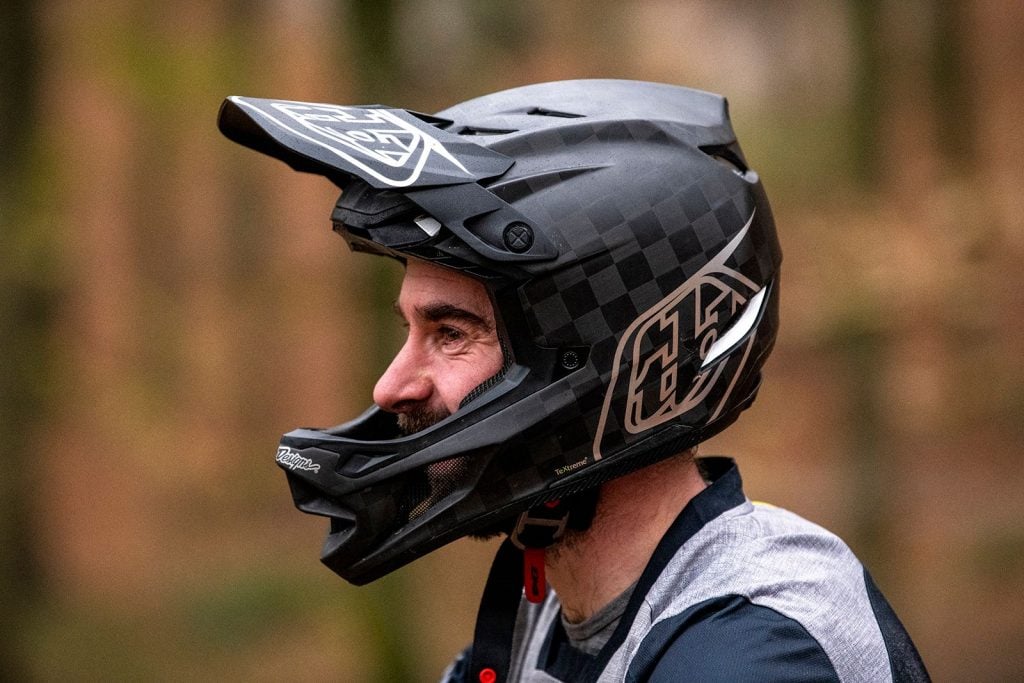
Anyone who’s ever slid down a slope knows that it’s not getting down that’s the problem, but getting down in control (and in one piece). This is both the challenge and the appeal of downhill biking, which usually includes ramps and jumps, and requires the sturdiest protection.
Enduro riding consists of a roughly equal mixture of uphill and downhill, but can also include a lot of the same jumps found in downhill. As one of the most dangerous styles of mountain biking, you’re not going to want to skimp on protection if you’re brave enough to give these a shot.
For aggressive downhill or even enduro, you’ll need a high-strength, resilient, full-face helmet, although if you’re being a bit gentler, the Bell Super 3R or 100% Status is a good choice for enduro.
2. Fit and Comfort
This is the first and most important thing to consider when buying a helmet. Because you’re going to be wearing your helmet for long stretches, you want something that feels good while offering great protection.
An ill-fitting helmet can not only cause headaches, but it won’t provide good protection in a fall.
Of course, not every head is the same, which is why manufacturers include adjustable straps and capstans in their helmets. These allow a helmet to be fitted perfectly so that the best safety features can be enjoyed by riders of all shapes and sizes.
Helmets now come in a wide range of sizes, saving you the trouble of stuffing the helmet to keep it stable or gritting your teeth to live with one that pinches.
3. Ventilation
Mountain biking is sweaty, hard work, and there’s nothing more annoying or distracting than having sweat constantly drip into your eyes and ears.
When buying a new helmet, keep an eye out for one with wide channels on the front and top which will allow air to pass over the head easily, cooling you without sacrificing protection.
This will also help you save money because your helmet will smell fresher and require a little less maintenance than one soaked in sweat from tough rides.
A good example of well-ventilated helmets is the Smith Venture and Giro Montaro, which have 20 and 16 air vents.
4. Safety Features
Among all the helmet features, the most important would be safety.
Safety features and technologies have evolved in recent years by introducing MIPS, SPIN, Wavecel, and Koroyd.
Let’s take a closer look at each of the safety features.
MIPS
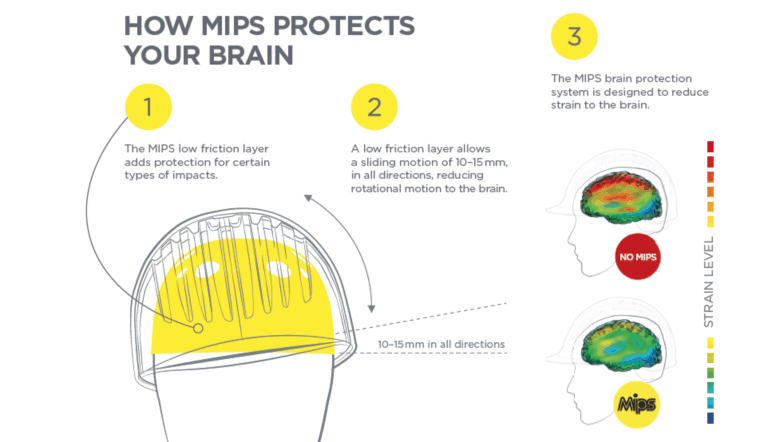
Multi-directional Impact Protection System (MIPS) was the first of the advanced protection systems brought to market. It consists of a slip-plane liner between the foam and the pads of the helmet which slips and rotates to redirect force away from the brain.
MIPS is the most common safety technology available for its reliability and familiarity and can be found in helmets such as the Giro Fixture, Specialized Ambush, Bontrager Solstice, Troy Lee A1, and Bell Super 3R.
Read More : Do You Really Need A Bike Helmet with MIPS?
SPIN
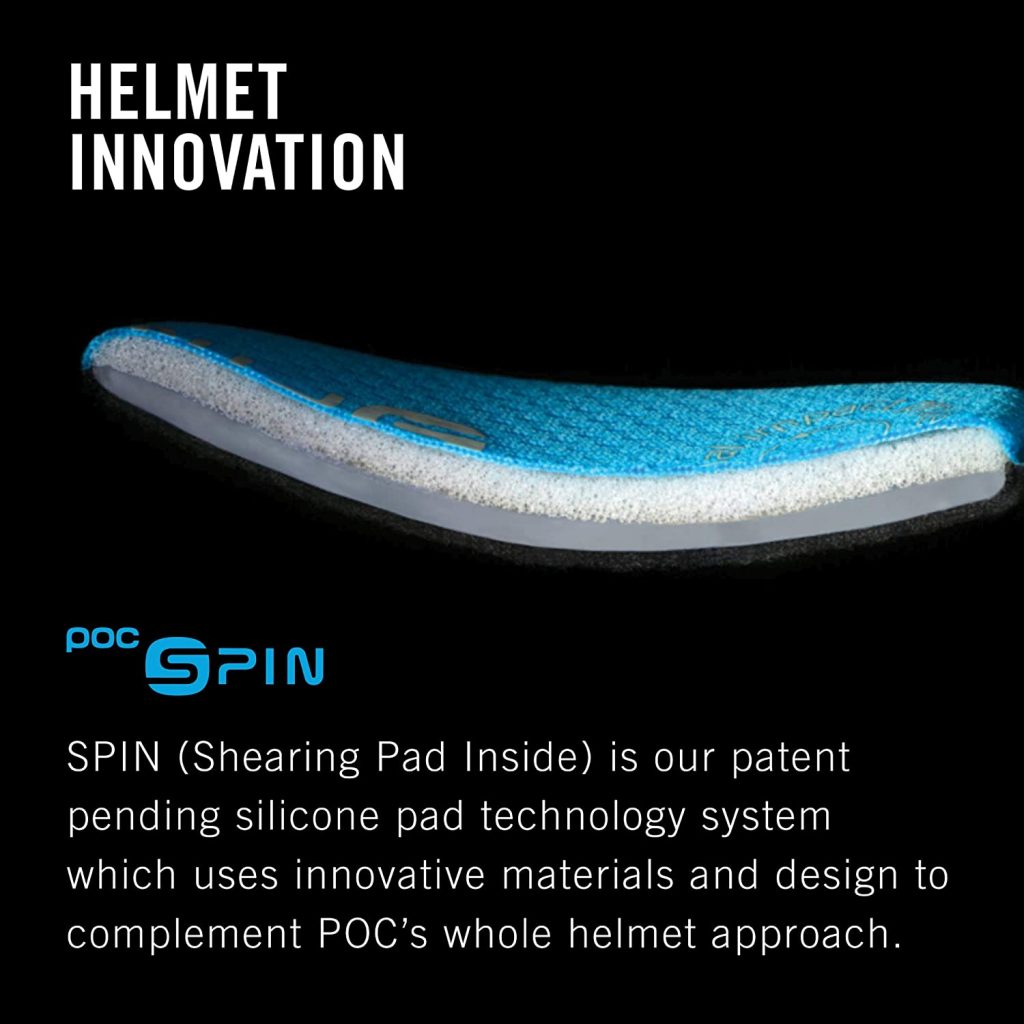
Shearing Pad INside (SPIN) is a Swedish company POC’s competitor system to MIPS, using a slightly different approach for much the same result.
SPIN uses a series of gel-based and synthetic pads that work together to create a controlled movement to compensate during a crash.
SPIN is exclusive to POC and it’s incorporated into the POC Octal X.
Wavecel
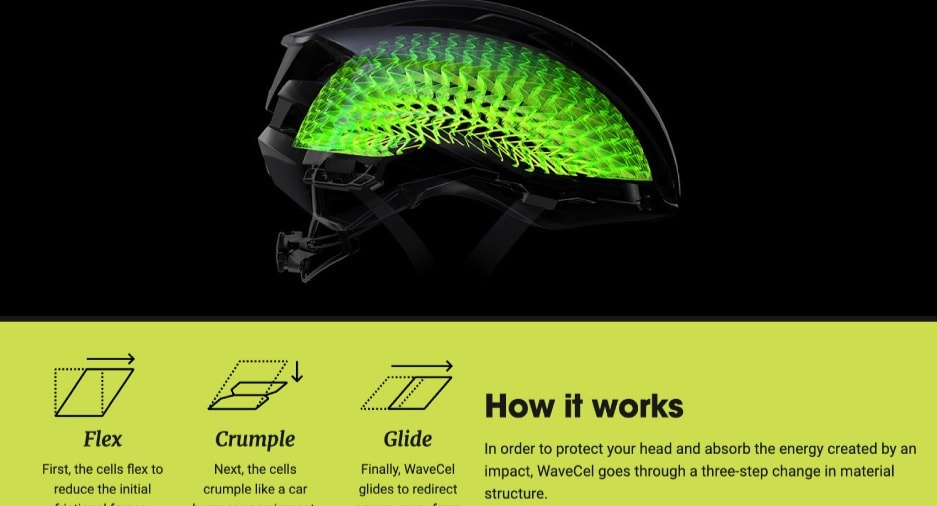
Wavecel is a cutting-edge product from Bontrager that uses a mesh of synthetic gel between the helmet’s pads and shell to create something like a crumple zone.
In an impact, the resilient material flexes and crumples in reaction to the force at the point of impact to absorb and redirect it. Bontrager claims that this is up to 48 times as safe as traditional foam helmets, and it’s certainly one of the most futuristic-looking options available.
Koroyd
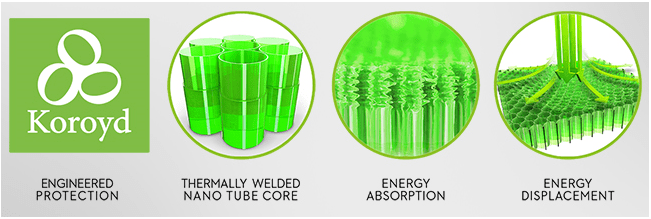
Koroyd consists of a mesh that shapes perfectly to the head and reacts by distributing force in a crash.
Koroyd’s unique point is that it’s constructed from tubes of material that have been welded together, eliminating adhesives that can corrode or break apart.
5. Safety Standards
All helmets from reputable brands are put through a safety standards test and certification before being sold. Depending on your region, the safety standards would differ slightly.
You can find the safety standard sticker on the helmet’s inner.
Here are the 3 most commonly used safety stands in helmets.
CE
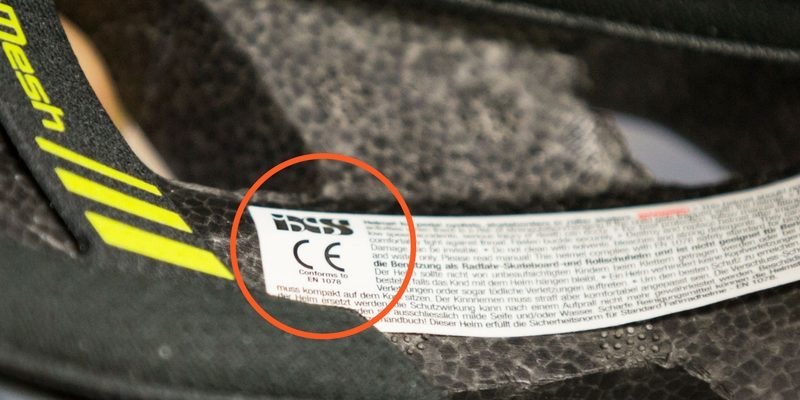
CE or Conformité Européenne (European Conformity) is the safety standard for products manufactured or sold in the European Economic Area. Helmets with this mark have been subjected to rigorous European testing standards.
CPSC
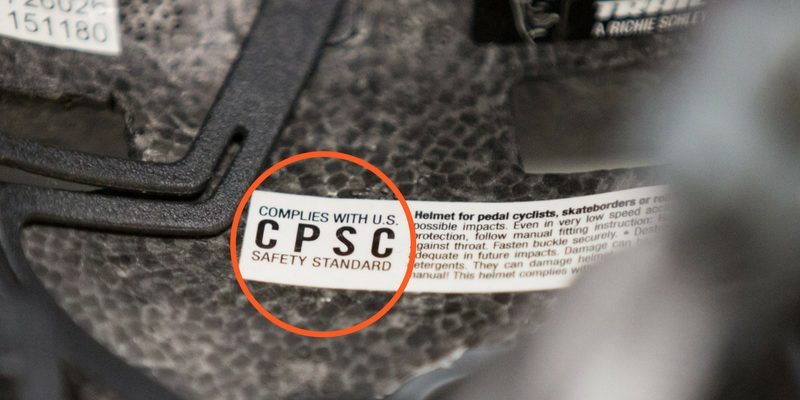
The U.S. Consumer Product Safety Commission (CPSC) tests to ensure that helmets don’t impair vision, stay comfortably and firmly on the head, and don’t include straps that stretch unreasonably.
AS/NZS
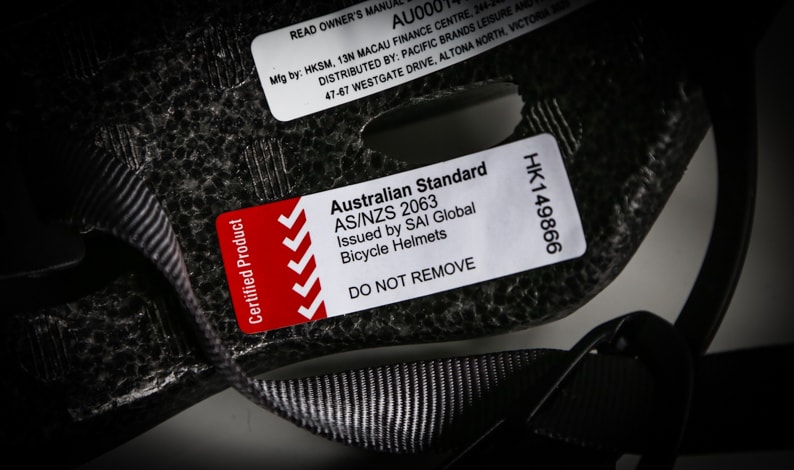
The Australian and New Zealand standard requires helmets to absorb energy in an impact, to distribute the load, and a retention system to ensure helmets stay properly attached to your head.
6. Helmet Weight
The rule of thumb in cycling equipment is the lighter, the better.
The key is finding one at the perfect intersection of sturdiness, coverage and weight.
Lightweight helmets such as the POC Octal X and Smith Forefront 2 which are suitable for trail riding probably won’t cut it for downhill riding.
For cross-country or trail riding, helmets can weigh anywhere between 255g to 370g, while a downhill helmet anywhere from 708 to 1135g.
7. Crash Replacement
Opinion varies when replacing a helmet, but most manufacturers agree that you should get a new one after any impact is more significant than a drop.
Some manufacturers such as Bontrager will even replace a helmet for you, often at a reduced cost.
Budget MTB Helmets
Giro Fixture MIPS
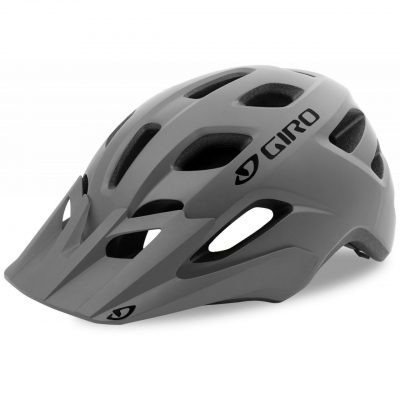
Long trusted by cyclists, Giro was one of the first companies to adopt MIPS technology when it debuted on the market in 2001.
The Giro Fixture is a terrific budget buy for those just getting started in mountain biking. It offers safety features such as MIPS which you usually expect to find in mid to top range mountain bike helmets.
It’s a one-size-fits-all design with a fully adjustable retention system with an adjustable rear dial, and features a fixed visor to protect the eyes from sun and debris.
- Pros : Comes with MIPS and plenty of ventilation vents.
- Cons : Universal sizing for everyone. Fit is adjusted through a real dial.
Smith Venture MIPS
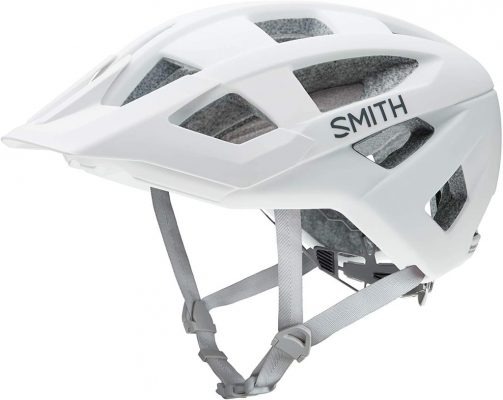
Smith’s Venture combines great design, value, comfort, and durability.
If looking cool is one of your main priorities while riding, look no further than the Smith Venture. There are 6 colors to choose from with matte white and matte black being the favorites among a lot of mountain bikers.
Its Vaporfit Adjustable Fit System allows adjustment from the back and fine-tuning from the front, fitting head sizes that are a little out of the standard manufacturer’s range.
There are also 20 air vents throughout the helmet to ensure you are well ventilated especially during the hot summer days.
- Pros : Great looking design with 20 air vents.
- Cons : Visor is not remoeable.
Bontrager Solstice MIPS
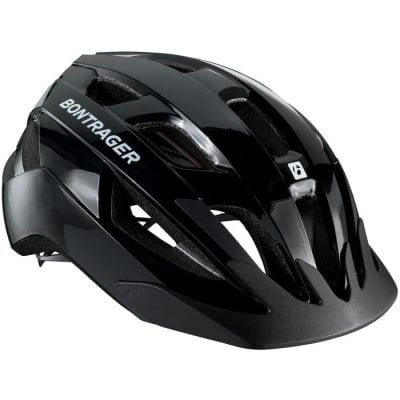
The Bontrager Solstice provides a great value for money when it comes to features, safety, and affordability.
Featuring MIPS technology, a highly flexible magnetic adjustment system to fit any size and shape of the head, and a removable visor offers maximum options for an impressively low price.
It’s also unique among budget helmets in that it’s made through in-mold construction, meaning it’s made from a single piece rather than being glued or taped together.
The design incorporates a good airflow to keep your head cool and dry, and it even comes with a crash replacement guarantee if you damage it within the first year of ownership.
- Pros : Good value for money with MIPS.
- Cons : Heavy at 375g
Lightweight MTB Helmets
POC Octal X Spin
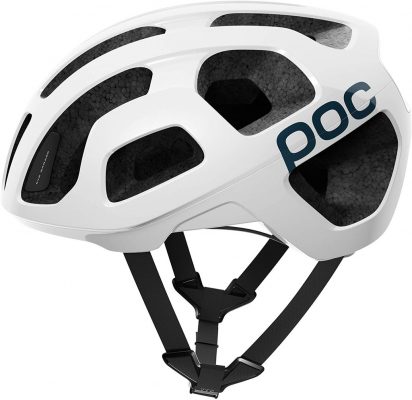
POC focuses their helmet design on AVIP; Attention, Visibility, Interaction, and Protection.
One of the lightest helmets on the market, the POC Octal X is well-ventilated and features a storage space for glasses and goggles, and it’s built around the latest developments in POC’s proprietary SPIN technology to provide the greatest protection in crashes.
Although its price can make some mountain bikers hesitant, what you get for your money is an impressive and comfortable helmet that’s great for cross-country. POC has always prided itself on being at the leading edge of helmet design, maintaining its own laboratory, and collaborating with sports scientists to combine incredible protection with unique comfort.
- Pros : One of the lightest helmets around.
- Cons : Expect to pay more.
Giro Montaro MIPS
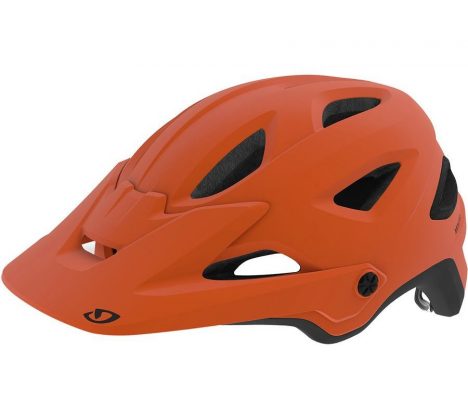
A new favorite for trail riders, the Giro Montaro is packed with handy features.
An adjustable visor leaves you plenty of choice in arranging your eyewear, while Giro’s proprietary Roc Loc fitting system helps you get the most comfortable fit-out of this in-mold constructed helmet.
Apart from that, Giro also combined their Roll Cage reinforcement with 16 air vents to ensure both protection and breathability. Perhaps the biggest draw, though, is the integrated camera mount for those who want to look back on their downhill artistry, but the anti-microbial lining certainly doesn’t hurt, either.
- Pros : 16 air vents for maximum breathability.
- Cons : Limited color choices.
Smith Forefront 2
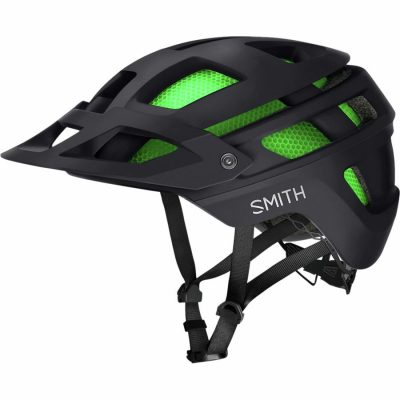
Smith made a huge splash with the Forefront back in 2013, taking home several awards for the design.
The Forefront 2 is a worthy successor to the award-winning Forefront which debuted back in 2013. The Smith Forefront 2 features a protective Koroyd material in its construction, doubling down on the impact absorption to create a helmet that’s among the lightest and safest available.
The fit is almost spot on with the VaporFit adjustment system which allows for micro-adjustments to keep the helmet snug while still being comfortable on your head. As a bonus, the visor can be adjusted into 3 positions depending on your ride, sunglasses, or if you are mounting a camera or light on your helmet.
- Pros : Design allows for micro-adjustments to achieve the perfect fit.
- Cons : Not ideal for hot summer days.
MTB Helmets with Best Safety Features
Troy Lee Designs A1 MIPS
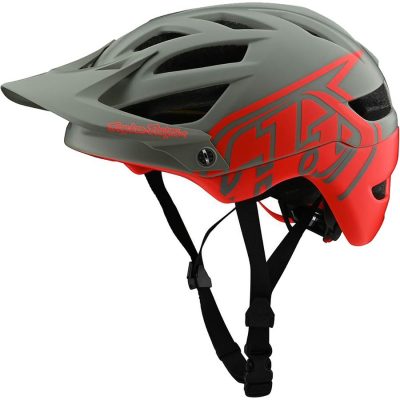
With thousands of miles of mountain trails, it’s no wonder California has turned out some exceptional MTB gear, and Troy Lee Designs is definitely a leader.
The A1 is something of a mixed bag, incorporating MIPS and good neck coverage, but it tends to get a little too hot in the summer, making it better for cold to moderate weather mountain biking.
The inner layers come with an anti-microbial, Coolmax liner to provide better comfort and fit. At 354g, it’s sturdy and tough, but not exactly lightweight compared to the likes of POC Octal X.
But best of all, there are 16 different designs and color schemes combo that you can choose from.
- Pros : Available in 16 different design and color combos.
- Cons : Not ideal for hot weather riding.
Specialized Ambush MIPS
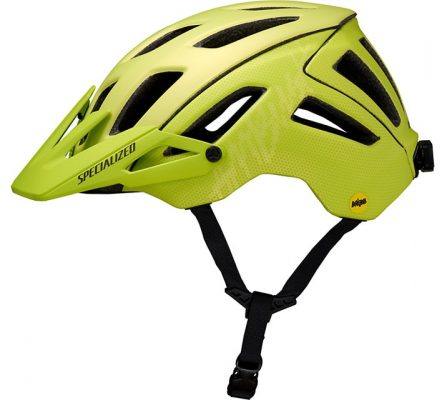
Specialized has made an effort to stand out by speccing their new Ambush helmet with a unique feature, a crash sensor called ANGi.
ANGi is an app-based, Bluetooth live tracking feed to your emergency contacts, alerting them in the event of a crash. This is done via a small, removable sensor unit attached to the back of the helmet.
The Ambush also features 20 vents, good neck coverage, and a unique Mindset 360 fit system where there are 5 height positions with an integrated dial for a precise fit. At 352g, it’s not among the lightest helmets out there but you definitely go wrong with all its safety features.
While ANGi isn’t perfect, and it’s not the most advanced helmet out there, it’s still a great piece of gear with a potentially groundbreaking safety feature.
- Pros : ANGi crash sensor provide another layer of safety.
- Cons : Expect to pay more.
Oakley DRT5 MIPS
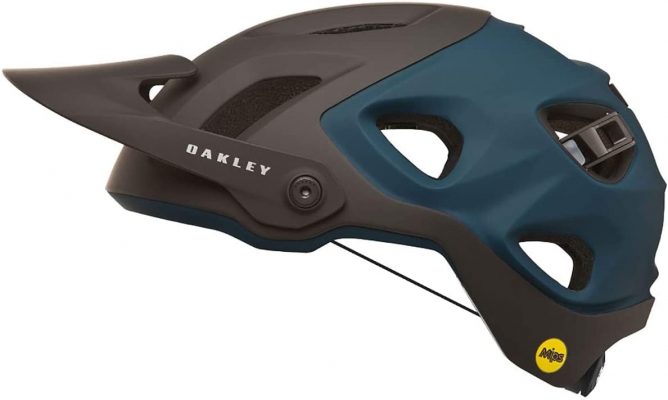
The DRT5 is Oakley’s latest attempt to branch out from its cycling sunglasses line.
It has definitely turned heads of late with its impressive array of safety and comfort features, low weight, and good design. Some of them include a newfangled sweat channel to keep your vision clear, an integrated eyewear storage rack and a fitting system that encompasses the whole head to ensure a perfect fit for each wearer.
The unique EyeWear Landing Zone allows you to store your sunglasses at the rear of the helmet. Doing so would free up space in front for increased airflows.
As with many tops of the line mountain bike helmets, the DRT5 comes with MIPS which will give you the confidence to power through the trails and bomb down the descents at speed.
- Pros : Unique eyewear storage at the rear that doesn’t impinge visibility.
- Cons : Very limited color choices.
Full Face MTB Helmets
100% Status
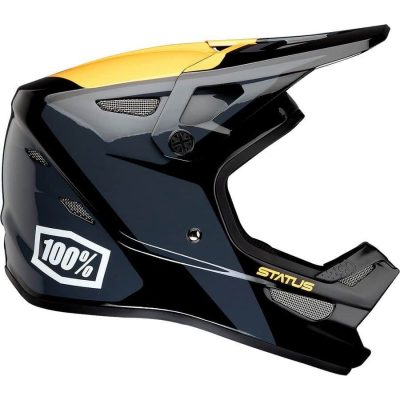
The 100% Status is almost unbeatable for downhill and BMX, combining all the latest lessons learned in full-face ventilation and weight-saving.
Coming from a company with roots in motocross, the makers of this helmet certainly know a thing or two about protection. With full-face coverage and meshed vents weighing in at 948g, it’s surprising how breathable this helmet is.
Incorporating 100%’s Active Cooling System, the well-designed ventilation system allows front-to-back airflow and also vertical airflow when stationary. It’s also an affordable option for riders who are looking to pick up some speed and take a chance on a few bumps with some rougher rides.
- Pros : Very breathable for a full-face helmet.
- Cons : Expensive.
Bell Super 3R MIPS
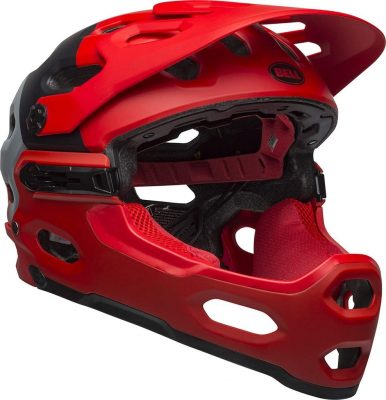
The Bell Super 3R is designed as a 2-in-1 helmet for both all-mountain and downhill riding.
The chin bar is easily removable without tools, which allows you to ride in trails and those long, steep climbs. Put the chin bar on, and now you will have a full-face helmet, and ready to bomb down the steep descends at speed.
The Super 3R also comes standard with MIPS, a detachable POV camera mount, and good goggle storage in an attractive array of colors. Some might balk at the expensive price tag, but the Bell Super 3R is worth it as it will cover you for all types of mountain bike riding.
- Pros : 2 in 1 design represents good value for money.
- Cons : Heavy.
Author Recommended Reads
John Philips
More Cycling Gear
The post Best Mountain Bike Helmets : Top Picks and Reviews appeared first on The Geeky Cyclist.
